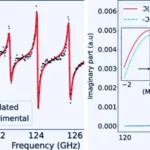Key Points:
- MIT Lincoln Laboratory releases TorNet, an open-source dataset containing radar returns from thousands of tornadoes.
- The dataset includes radar images from tornadic and non-tornadic storms, enabling researchers to compare storm characteristics.
- TorNet provides a standardized benchmark dataset for tornado research, fostering collaboration and innovation in the meteorological community.
- The release of TorNet marks a significant step towards improving tornado detection and prediction, potentially saving lives and reducing damage.
As spring returns to the Northern Hemisphere, so does tornado season, bringing with it the challenge of accurately detecting and predicting these violent phenomena. Meteorologists have long struggled to foresee tornadoes due to their elusive nature and the limitations of existing detection methods. However, a new open-source dataset called TorNet, curated by researchers at MIT Lincoln Laboratory, aims to revolutionize tornado detection by leveraging machine learning algorithms.
TorNet comprises radar returns from thousands of tornadoes that have struck the United States over the past decade. These radar images provide invaluable insights into the atmospheric conditions surrounding tornado formation. By analyzing this data, researchers hope to uncover patterns and indicators that could lead to more accurate tornado detection and prediction.
The dataset includes radar images from both tornadic and non-tornadic storms, allowing researchers to compare and contrast the characteristics of these events. Each sample in the dataset consists of radar images depicting different data products, such as reflectivity and radial velocity, providing a comprehensive view of storm dynamics.
One of the challenges in curating the dataset was the rarity of tornado events within the radar data. However, by carefully balancing tornadic and non-tornadic samples, the researchers ensured that the dataset presents a realistic and challenging scenario for machine learning algorithms.
The release of TorNet also includes baseline artificial intelligence models trained on the dataset. These models demonstrate the potential of machine learning, particularly deep learning, in accurately detecting tornadoes from radar data. Initial results show promising performance, with the deep learning model achieving high accuracy in classifying tornadoes of varying intensity.
The availability of TorNet marks a significant milestone in tornado research. It provides researchers with a standardized benchmark dataset for developing and evaluating tornado detection algorithms. TorNet aims to accelerate progress in tornado detection and prediction by fostering collaboration and innovation within the meteorological community.










